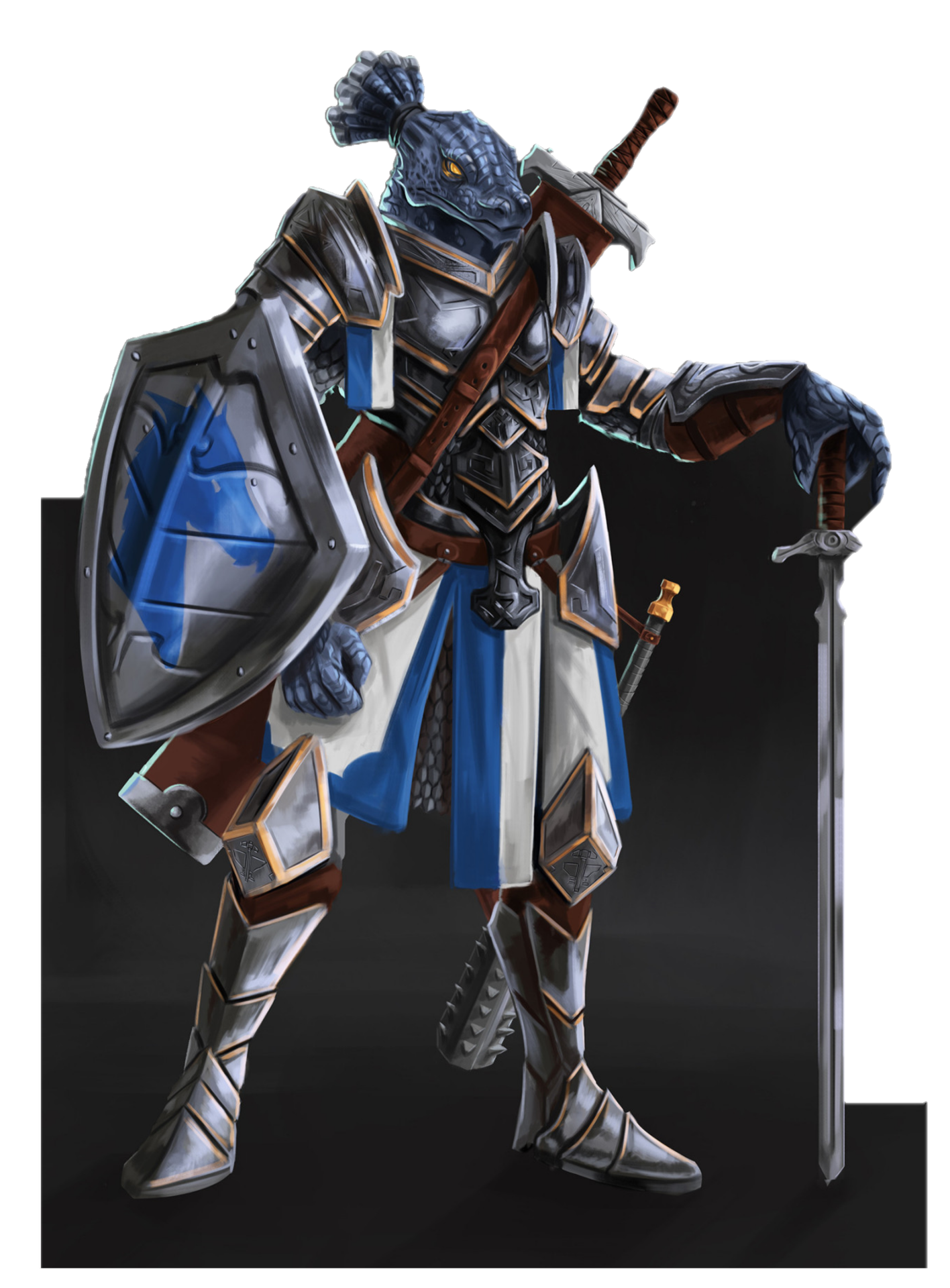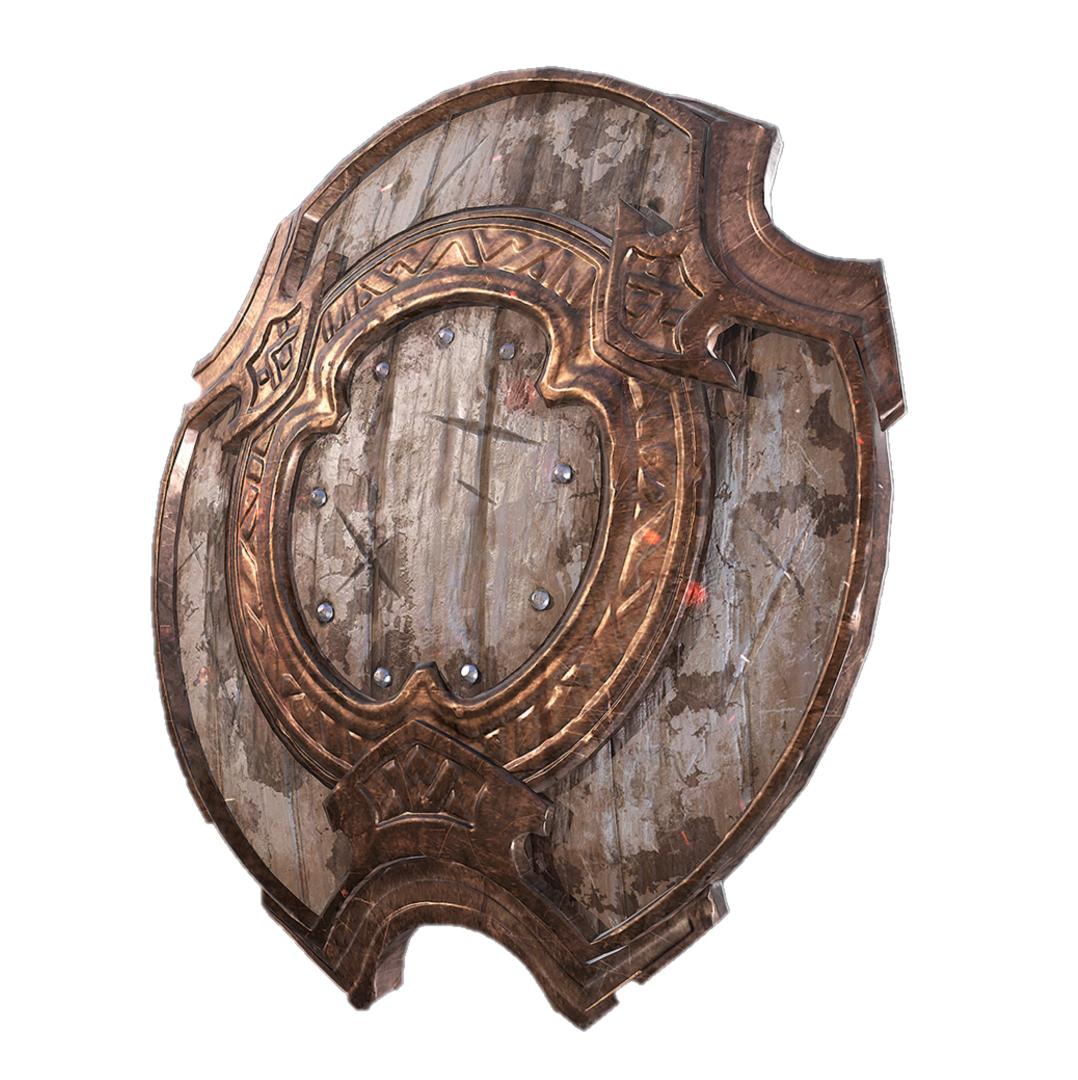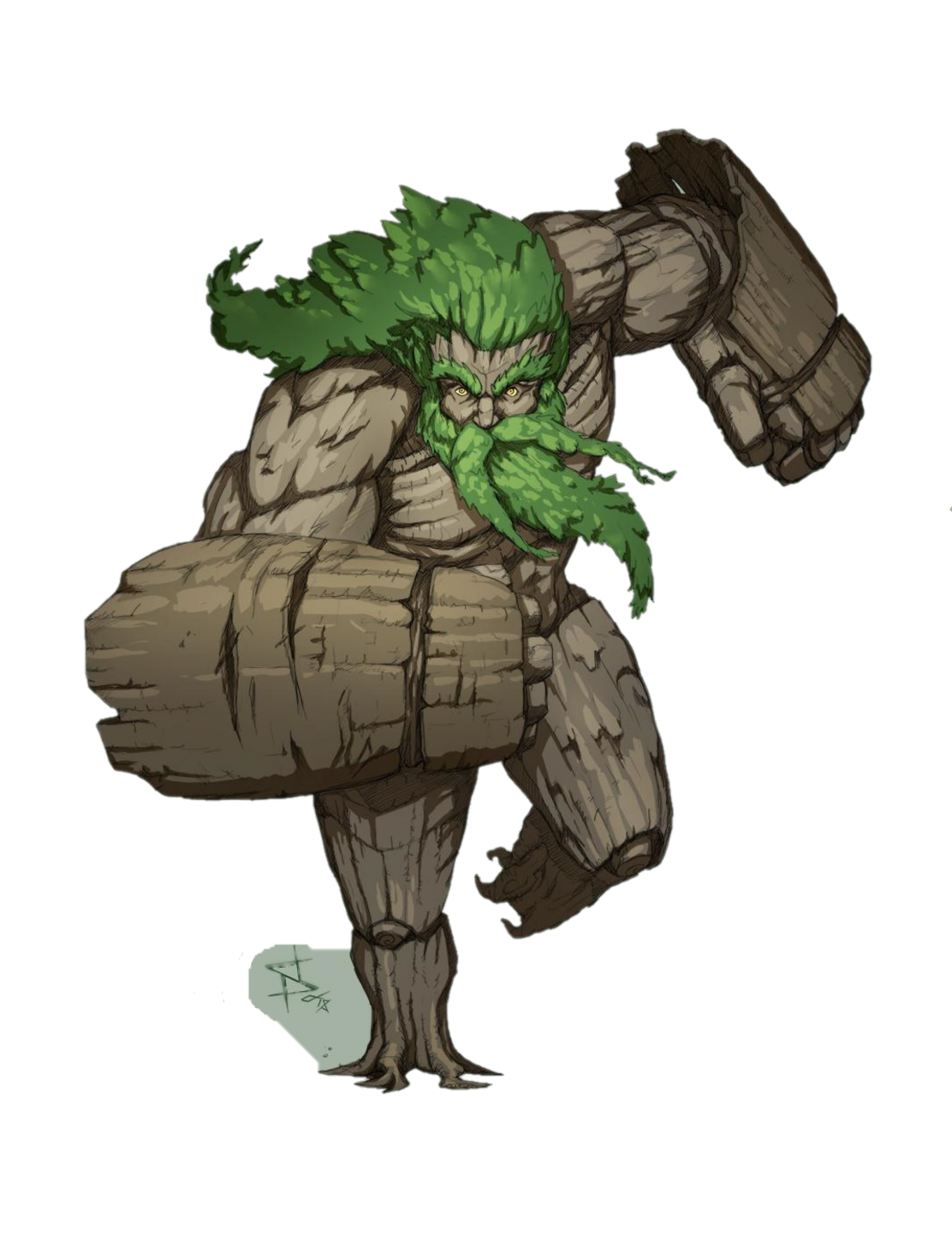homebrew by u/ryanrows
Castle art by Waldemer van Deurse
Dragonborn art by Martin Kirby
Gauntlet Logo by unknown






































Armorist
A tall human woman strides unarmored but unafraid toward the red dragon before her. As the dragon bites down on her, brambly wooden plate mail grows around her body, harming the dragon and leaving her untouched.
A muscular tiefling man squares his feet and angles an enormous two-handed shield toward a stampede of gorgons. As they crash into his defense, he pushes them back and goads them on, daring them to break his fortified defense.
Encased in swirling spirits, a dwarf dashes into the midst of horde of orcs, deflecting blows as the spirits push back the orcs' axes.
These armorists, different as they may be, are united by their specialized armor. Unlike the common armor floating around the world, an armorist's is beyond the comprehension of even the most practiced knight. By means of nature, spirits, intelligence, or strength, armorists smash into the front lines of combat with the power to destroy their foes and the strength to protect their allies from the harm that would befall them.
The Shield and The Sword
Armorists train to be well-protected juggernauts, careening through the battlefield like a wrecking ball. What they lack in weapon training, they make up for with the wits that power and personalize their armor and the weight they throw around. Some use these wits to augment their armor in traditional ways, mimicking the weapons others wield. Others cast aside such weaponry, choosing instead to create armor that both protects and damages.
However they wield their armor, armorists use their minds to exploit the strength inherent in heavy armor and perfect their bodies to sustain the effort of carrying the suit's burden.
The Will to Protect
While an armorist may make a living as a soldier or a bodyguard, to don the armor is to accept that you possess a deeper calling. Whether that calling is to protect the innocent, the self, or allies, an armorist's protective nature draws them ever forward, for danger always lurks and harm comes to all in this cruel world.
This strong will to protect makes armorists well-suited for adventuring parties with others who rely upon them. But that isn't to say that the armorirst lives only to serve and protect others, for out in the world there are secrets, and such secrets may answer questions the armorists need to continue perfecting their armor and the art of wielding it.
Creating an Armorist
As you make your armorist, consider the source of your armor and what or who you feel you want to protect. Did you find your armor and work to learn its secrets? Was your armor passed down through your family or your tribe? Did you endeavor to create it to protect those you love or because you lost someone you couldn't protect?
Then consider why adventuring called to you or became necessary. Was someone or something taken from you? Did your friends choose to take up the adventuring life, drawing you with them for protection? Does you crave experience testing your armor against monsters and creatures?
Class Name
| Level | Proficiency Bonus | Features | Heavy Strike | Augmentations Known |
|---|---|---|---|---|
| 1st | +2 | Light Like Leather, Heavy Strike | 1d4 | — |
| 2nd | +2 | Armor Augmentations | 1d4 | 1 |
| 3rd | +2 | Armor Tradition | 2d4 | 1 |
| 4th | +2 | Ability Score Improvement | 2d4 | 1 |
| 5th | +3 | Extra Attack | 3d4 | 1 |
| 6th | +3 | Tradition Feature | 3d4 | 1 |
| 7th | +3 | Careful Step | 4d4 | 2 |
| 8th | +3 | Ability Score Improvement | 4d4 | 2 |
| 9th | +4 | Proficient Protection | 5d4 | 2 |
| 10th | +4 | Tradition Feature | 5d4 | 2 |
| 11th | +4 | ─ | 6d4 | 3 |
| 12th | +4 | Ability Score Improvement | 6d4 | 3 |
| 13th | +5 | ─ | 7d4 | 3 |
| 14th | +5 | Deceptively Agile | 7d4 | 3 |
| 15th | +5 | ─ | 8d4 | 4 |
| 16th | +5 | Ability Score Improvement | 8d4 | 4 |
| 17th | +6 | Tradition Feature | 9d4 | 4 |
| 18th | +6 | Strength of Will | 9d4 | 4 |
| 19th | +6 | Ability Score Improvement | 10d4 | 4 |
| 20th | +6 | Heavy Strike Master | 10d4 | 5 |
Quick Build
You can create an armorist quickly by following these suggestions. First, Strength should be your highest ability score. Make Intelligence your next highest ability score if you take the Aegis Tradition. Choose Wisdom instead if you take the Barkheart or Spiritor Tradition. Second, choose the Soldier background.
Multiclassing
Ability Score Minimum. As a multiclass character, you must have at least a Strength score of 13 to take a level in this class.
Proficiencies Gained. You gain the following proficiencies at first level when you multiclass as an armorist: heavy armor and smith's tools.
homebrew by u/ryanrows
Class Features
As an armorist, you gain the following class features.
Hit Points
- Hit Dice: 1d10 per armorist level
- Hit Points at 1st Level: 10 + your Constitution modifier
- Hit Points at Higher Levels: 1d10 (or 6) + your Constitution modifier per armorist level after first
Proficiencies
- Armor: All armor, shields
- Weapons: Simple weapons, battleaxes, longswords, tridents, and warhammers.
- Tools: Smith's tools
- Saving Throws: Strength, Constitution
- Skills: Choose two from Animal Handling, Athletics, History, Insight, Intimidation, and Survival.
Equipment
You start with the following equipment, in addition to the equipment granted by your background:
- (a) a warhammer and a shield or (b) 2 simple melee weapons
- (a) a dungeoneer's pack or (b) an explorer's pack
- (a) a chain shirt or (b) chain mail
- smith's tools and four javelins
Light Like Leather
Your mastery of heavy armor allows you navigate its wear with ease. You don and doff heavy armor as if it were light armor, and you can don and doff shields as a bonus action, rather than an action, on your turn.
Heavy Strike
Beginning at 1st level, you know how to overwhelm a foe's defenses through the weight of your blows. Once per turn, when you hit a creature with a melee weapon attack and you do not have disadvantage on the roll, you can throw your armor's weight into the attack, dealing an additional 1d4 damage to the target. The extra damage is of the same type as the weapon damage. The attack must use a one-handed or versatile melee weapon that lacks the finesse property, unless otherwise stated by a subclass feature.
The amount of extra damage increases as you gain levels in this class, as shown in the Heavy Strike column of the Armorist Table.
Armor Augmentations
In your studies experimenting with your armor, you have learned augmentations that provide your armor with additional uses, and you make these augmentations with smith's tools.
At 2nd level, you gain one armor augmentation of your choice. Your augmentation options are detailed at the end of the class description. When you gain certain armorist levels, you gain additional augmentation of your choice, as shown in the Augmentations Known column of the Armorist table.
Additionally, when you gain a level in this class, you can choose one of the augmentations you know and replace it with another augmentation that you could learn at that level.
If an augmentation has prerequisites, you must meet them to learn it. You can learn the augmentation at the same time that you meet its prerequisites. A level prerequisite refers to your level in this class.
Armor Tradition
At 3rd level, You choose an armor tradition that hones the substance of your armor. Choose an armor tradition from those of the Aegis, the Barkheart, the Machinist, or the Spiritor. Each armor tradition is detailed at the end of the class description. Your choice grants you features at 3rd Level, and again at 6th, 10th, and 17th levels.
Ability Score Improvement
When you reach 4th level, and again at 8th, 12th, 16th, and 19th level, you can increase one ability score of your choice by 2, or you can increase two ability scores of your choice by one. As normal, you can't increase an ability score above 20 using this feature.
Extra Attack
Beginning at 5th level, you can attack twice, instead of once, whenever you take the Attack action on your turn.
homebrew by u/ryanrows
art by Lucas Ferreira





























Careful Step
By 7th level, you have learned how to move in your armor with greater efficiency. You do not have disadvantage on Stealth checks made while wearing heavy armor.
Proficient Protection
Beginning at 9th level, your proficiency in heavy armor is unmatched. While wearing heavy armor, you add half of your proficiency bonus, rounded down, to your armor class.
Deceptively Agile
By 14th level, you have acquired reflexes quick enough to move even the heaviest plate. You gain proficiency in Dexterity saving throws.
Strength of Will
Beginning at 18th level, if an effect would reduce your armor class such that it is less than your Strength score, you can use that score in place of your armor class while the effect is active.
Heavy Strike Master
At 20th level, you have perfected the art of the heavy strike. When you use your heavy strike feature, you may reroll any 1s on the heavy strike damage dice once. You must use the new rolls.
Armor Traditions
All armorists have a shared story. It is that of how they came into their armor. For some, it was a quest all its own, for others just the beginning of a life of quests. Regardless of the source or the path the armor creates, all armorists share a passion for their armor, and its in this passion that traditions flourish.
Aegis Tradition
For some armorists, the standard shield is a paltry object. To stand encased in shining plate and to wield a shield as small and feeble as that of a light armored weakling is all but intolerable. Armorists of the aegis tradition focus on developing their massive shields into a legend that scoffs at the sword of sword and board. They learn to wield the mighty aegis and to manipulate the battlefield around them, protecting themselves and their allies with unrivaled superiority.
Aegis Proficiency
When you enter this tradition at 3rd level, you become proficient with aegises and you can use them with your Heavy Strike feature.
| Weapon Name | Cost | Damage | Weight | Properties |
|---|---|---|---|---|
| Aegis | 25gp | 1d6 bludgeoning | 12 lb. | Heavy, two-handed, special |
Special Weapon Property: While equipped, an aegis is considered a shield that grants +3 to Armor Class, rather than +2.
Additionally, you gain an aegis for free and add it to your inventory--the result of the process by which you've joined this tradition.
Shield Block
Starting at 3rd level, when you are hit by an attack the causes bludgeoning, piercing, or slashing damage and you are wielding a shield or aegis, you can roll a d4 and subtract the number rolled from the damage you receive.
At 6th level, you can add your Intelligence modifier to the number rolled, and subtract that total.
Shield Thrusts
At 6th level, you learn three thrusts that you can use with your shield or aegis. When you use your Heavy Strike, you can use your bonus action to activate one of the following thrusts as a part of the strike. The saving throw DC is equal to 8 + your proficiency bonus + your Intelligence modifier.
Disarming Thrust. The creature must make a Strength saving throw. On a failed save, it drops an object you choose and that object falls at the creature's feet.
Goading Thrust. The target must make a Wisdom saving throw. On a failed save, the target has disadvantage on all attack rolls against targets other than you until the end of your next turn.
Pushing Thrust. If the target is Large or smaller, it must make a Strength saving throw. On a failed save, you push the target up to 15 feet away from you.
You may use this feature a number of times equal to your Intelligence modifier. You regain all uses at the completion of a long rest.
Wide Stance
Beginning at 10th level, you learn how to adjust your stance to shield enemies while wielding an aegis. As long as you are wielding an aegis and you are not prone or suffering from a condition that reduces your speed to 0, allies within 5 feet of you gain +1 to their armor class.
All Shield
At 17th level, your use of the shields is unparalleled. You shield block die increases to 1d8, and it applies to all damage types excluding psychic.
homebrew by u/ryanrows
art by Arthur Piassi

Barkheart Tradition
Many warriors believe nature and heavy armor to be mutually exclusive, but the barkheart knows better. Barkhearts enter a sacred relationship with nature, be it a pact with a natural entity, an oath to an ancient wisdom, or just a simple agreement among beings of the living world. In doing so, they learn to create heavy armor from the bark of ancient trees to better protect the wilds from those who would destroy them, and with nature's wisdom at and on their backs, they develop skills that even the oldest treants envy.
Bark Armor
When you enter this tradition at 3rd level, you are granted a set of bark armor. You can use your action to create your bark armor around your body and you can choose the form that this armor takes each time you create it (see the Armor section of the basic rules for armor options), so long as it Heavy Armor. Your bark armor is considered wooden for the purposes of effects, such as that of the heat metal spell.
Your bark armor disappears if you doff it for 1 minute or more. It also disappears if you use this feature again, if you dismiss the armor (no action required), or if you die.
You can transform one set of heavy armor into your bark armor by performing a special ritual while you hold the armor. You perform the ritual over the course of 1 hour, which can be done during a short rest. You can dismiss the armor, shunting it into an extradimensional space, and it appears whenever you create your bark armor thereafter. You can't affect an artifact or sentient armor in this way. The armor ceases being your bark armor if you die, if you perform the 1-hour ritual on a different weapon, or if you use a 1-hour ritual to break your bond to it. The armor appears at your feet if it is in the extradimensional space when the bond breaks.
Bramble Spike
Beginning at 3rd level, you can grow spiky brambles from your armor to damage those who seek to damage you. When a creature within 5 feet of you that you can see hits you with an attack, you can use your reaction to cause the creature to make a Dexterity saving throw (DC equal to 8 + your proficiency bonus + your Wisdom modifier). The creature takes 1d6 piercing damage on a failed saving throw, and half as much damage on a successful one. This damage increases when you reach certain levels in this class, increasing to 2d6 at 10th level, 3d6 at 15th level, and 4d6 at 20th level.
You can use this feature a number of times equal to your Wisdom modifier (minimum of once). You regain all uses when you finish a long rest.
Absorbent Bark
At 6th level, the bark coating your armor absorbs poisonous material. You have resistance to poison damage and advantage on saving throws against being poisoned.
Forest Traveler
At 6th level, you are particularly familiar with forests and are adept at traveling and surviving in such regions. While traveling for an hour or more in forests, you gain the following benefits:
- Difficult terrain doesn’t slow your travel.
- Even when you are engaged in another activity while traveling (such as foraging, navigating, or tracking), you remain alert to danger.
- If you are traveling alone, you can move stealthily at a normal pace.
Nature's Guidance
At 10th level, you gain the ability to consult with nature. When you do so, you cast the augury or commune with nature spell, without using a spell slot or material components. Wisdom is your spellcasting ability for these spells.
After you cast either spell in this way, you can’t use this feature again until you finish a long rest.
Bark Soul
Beginning at 17th level, you can use your action to magically assume the shape of a treant for 1 minute. Your game statistics are replaced by the statistics of the treant, which can be found on page 289 of the Monster Manuel, though you retain your alignment and Intelligence, Wisdom, and Charisma scores. You also retain all of your skill and saving throw proficiencies, in addition to gaining those of the creature. If the treant has the same proficiency as you and the bonus listed in its statistics is higher than yours, use the treant's bonus in place of yours.
You assume the hit points and Hit Dice of the new form. When you revert to your normal form, you return to the number of hit points you had before you transformed. If you revert as a result of dropping to 0 hit points, any excess damage carries over to your normal form. As long as the excess damage doesn't reduce your normal form to 0 hit points, you aren't knocked unconscious.
You retain the benefit of any features from your race, feats, class, including your Bark Armor and Absorbant Bark features, or other source and can use them, provided that your treant form is physically capable of doing so. You can't use any special senses you have (for example, darkvision) unless your new form also has that sense. You drop any equipment that you were holding, such as a weapon or shield.
While in this form, you must maintain concentration to stay in the form, as if concentrating on a spell. Should you lose your concentration, your form reverts to its normal state.
homebrew by u/ryanrows
art by SteveSketches



Spiritor Tradition
Amongst armorists, there is a tradition so steeped in mystery and secrecy that few can say they've even witnessed its use. But for those who have, they speak of the Spiritors in whispers, recalling how they bound the souls of the dead and damned to guard them against harm. Where other traditions make use of physical armors only, the Spiritor supplements their strength with spiritual energy.
Spellcasting
When you reach 3rd level, you learn to cast spells. See chapter 10 of the Player's Handbook for the general rules of spellcasting and the chapter 11 for the cleric spell list.
Cantrips. You learn two cantrips of your choice from the cleric spell list. You learn an additional cleric cantrip of your choice at 10th level.
Spell Slots. The Spiritor Spellcasting table shows how many spell slots you have to cast your cleric spells of 1st level and higher. To cast one of these spells, you must expend a slot of the spell's level or higher. You regain all expended slots when you finish a long rest.
For example, if you know the 1st level spell inflict wounds and have a 1st-level and a 2nd-level spell slot available, you can cast inflict wounds using either slot.
Spells Known of 1st-Level and Higher. You know three 1st-level cleric spells of your choice, two of which you must choose from the abjuration and necromancy spells on the cleric spell list.
The Spells Known column of the Spiritor Spellcasting table shows when you learn more cleric spells of 1st level or higher. Each of these spells must be an abjuration or necromancy spell of your choice, and must be of a level for which you have spell slots. For instance, when you reach 7th level in this class, you can learn one new spell of 1st or 2nd level.
The spells you learn at 8th, 14th, and 20th level can come from any school of magic.
Whenever you gain a level in this class, you can replace one of the cleric spells you know with another spell of your choice from the cleric list. The new spell must be of a level for which you have spell slots, and it must be an abjuration or necromancy spell, unless you're replacing the spell you gained at 3rd, 8th, 14th, or 20th level from any school of magic.
Spellcasting Ability. Wisdom is your spellcasting ability for your cleric spells, since you learn your spells through connections with spirits. You use your Wisdom whenever a spell refers to your spellcasting ability. In addition, you use your Wisdom modifier when setting the saving throw DC for a cleric spell you cast and when making an attack roll with one.
Spell Save DC
Spell attack modifier
homebrew by u/ryanrows
Spirit Shroud
Beginning at 6th level, when you cast a spiritor spell, you gain temporary hit points equal to 1d8 + the spell's level.
Spiritor Spellcasting
| Armorist Level | Cantrips Known | Spells Known | 1st | 2nd | 3rd | 4th |
|---|---|---|---|---|---|---|
| 3rd | 2 | 3 | 2 | - | - | - |
| 4th | 2 | 4 | 3 | - | - | - |
| 5th | 2 | 4 | 3 | - | - | - |
| 6th | 2 | 4 | 3 | - | - | - |
| 7th | 2 | 5 | 4 | 2 | - | - |
| 8th | 2 | 6 | 4 | 2 | - | - |
| 9th | 2 | 6 | 4 | 2 | - | - |
| 10th | 3 | 7 | 4 | 3 | - | - |
| 11th | 3 | 8 | 4 | 3 | - | - |
| 12th | 3 | 8 | 4 | 3 | 2 | - |
| 13th | 3 | 9 | 4 | 3 | 2 | - |
| 14th | 3 | 10 | 4 | 3 | 2 | - |
| 15th | 3 | 10 | 4 | 3 | 3 | - |
| 16th | 3 | 11 | 4 | 3 | 3 | - |
| 17th | 3 | 11 | 4 | 3 | 3 | - |
| 18th | 3 | 11 | 4 | 3 | 3 | - |
| 19th | 3 | 12 | 4 | 3 | 3 | 1 |
| 20th | 3 | 13 | 4 | 3 | 3 | 1 |
Spread Spirits
Beginning at 10th level, your relationship with spirits allows you to draw them around others. When you use your action to cast a spiritor spell, you can use your bonus action to grant your Spirit Shroud to a friendly creature within 30 feet of you in addition to yourself.
Spirit Guardian
At 17th level, you know the Spirit Guardians spell and you can cast it at 3rd level without expending a spell slot once per short rest. Should you already know the Spirit Guardians spell, you may choose another spell from the cleric spell list and add it your list of spells known.
Additionally, whenever you cast the Spirit Guardians spell, you do so as a bonus action, rather than an action.
Armor Augmentations
If an armor augmentation has prerequisites, you must meet them to learn it. You can learn the augmentation at the same time that you meet its prerequisites.
Absorbent Alloys
prerequisite: armorist level 11
You add a metallic alloy to your armor that is able to absorb energies and blast them out through your strikes. Once per long rest, you may use your reaction to cast absorb elements at 1st level without expending a spell slot.
If you took the Aegis Tradition, Intelligence is your spellcasting ability. If you took Barkheart or Spiritor traditions, Wisdom is your spellcasting ability.
Actuating Gauntlet
prerequisite: armorist level 7
When you engage in two-weapon fighting, you can add your ability modifier to the damage of the second attack.
Armored Lockbox
You create a container within the back of your armor with a volume of 8 cubic feet. You may store any items that you desire in this space so long as it no larger than 2 feet in any direction. When stored in the space, the item is considered on your person as if it were in a backpack or other similar container.
Additionally, you may use an item interaction to open or close and lock this space with a key that only you possess. You may choose to duplicate this key any number of times if you would like. Anyone with a key may use an item interaction to open or close it. Should someone try to pick this lock, the DC is equal to your armor's armor class.
Bullseye Breastplate
prerequisite: have a tinderbox or flint in your possession
You create a permanent lantern and a 4-pint container within the breast of your armor. As a bonus action on your turn, you can activate the flint inside to light or extinguish the lantern. While lit, you cast bright light in a 60-foot cone and dim light for an additional 60 feet from your chest. Once lit, the lantern burns for 6 hours on a flask (1 pint) of oil. You may add oil to this container as an object interaction on your turn.
Camouflage
prerequisite: armorist level 15
You can spend 1 minute creating camouflage for yourself. You must have access to fresh mud, dirt, plants, soot, and other naturally occurring materials with which to create your camouflage.
Once you are camouflaged in this way, you can try to hide by pressing yourself up against a solid surface, such as a tree or wall, that is at least as tall and wide as you are. You gain a +10 bonus to Dexterity (Stealth) checks as long as you remain there without moving or taking actions. Once you move or take an action or a reaction, you must camouflage yourself again to gain this benefit.
homebrew by u/ryanrows
Chain Hook
prerequisite: have a chain (any length) and a grappling hook in your inventory
You weld one end of a chain (any length to your armor and a grappling hook to the other end. You may choose to attach that chain anywhere on your armor that you wish. The chain cannot be removed from you person and you may interact with the chain as an item interaction as you see fit.
Duelist's Spaulder
prerequisite: armorist level 7 | restriction: You cannot gain this benefit if you have adopted the dueling fighting style from another class.
When you are wielding a melee weapon in one hand and no other weapons, you gain a +2 bonus to damage rolls with that weapon.
Hand Crossbow
You become proficient with hand crossbows. You choose a hand crossbow in your possession and weld it into the gauntlet of your main or off-hand. This process takes 1 hour and can be accomplished over a short rest. While this augmentation is active, you cannot be disarmed of your crossbow while wearing your armor. This hand crossbow can be replaced with another by repeating this process over the course of 1 hour.
You cannot wield a weapon in your crossbow hand with this feature active.
Gauntlet Shield
You choose a shield in your possession and weld it to the gauntlet of your off-hand. This process takes 1 hour and can be accomplished over a short rest. While this augmentation is active, you cannot be disarmed of your shield while wearing your armor. This shield can be replaced with another by repeating this process over the course of 1 hour.
You cannot wield a weapon in your off-hand with this feature active.
Gauntlet Whip
You become proficient with whips. You choose a whip in your possession and attach it into the gauntlet of your main or off-hand. This process takes 1 hour and can be accomplished over a short rest. While this augmentation is active, you cannot be disarmed of your whip while wearing your armor. This whip can be replaced with another by repeating this process over the course of 1 hour.
You cannot wield a weapon in your whip with this feature active.
Grapple Gauntlets
prerequisite: armorist level 11
You weld spikes to the inside of your gauntlets. When you make a Grapple check and succeed, you deal 1d4 piercing damage to the grappled creature. As a bonus action on subsequent turns, you may squeeze the grappled creature to deal an additional 1d4 piercing damage + your Strength modifier.
Heavy Hands
When you hit a creature and use your heavy strike, you can reduce the creature's speed by 10 feet until the end of your next turn.
Heavy Shoes
You weld small spikes to the soles of your armor's sabatons or shoes. You are not slowed by non-magical difficult terrain created by ice. You also have advantage on Strength (Athletics) to climb natural structures such as trees, glaciers, and the like.
Light Alloy
Your armor's weight is halved.
Menacing Spikes
You weld small spikes to the outside of your armor. Though harmless, they appear menacing. You gain proficiency in the Intimidation skill.
Mirrored Gauntlet
prerequisite: armorist level 15
You add reflective material to the underside of your gauntlet, making it occasional difficult for attacks to gauge the angle of your strikes. Once per long rest, you may give yourself advantage on a melee weapon attack against a creature that does not have truesight or tremorsense so long as it can see you.
Mirrored Plate
prerequisite: armorist level 15
You add reflective material to your armor, making it occasionally difficult for attackers to see you. Once per long rest, you may cast blur without expending a spell slot.
If you took the Aegis Tradition, Intelligence is your spellcasting ability. If you took Barkheart or Spiritor traditions, Wisdom is your spellcasting ability. The rules of spell concentration apply as usual.
Mirrored Shield
prerequisite: armorist level 7
You affix a thin but resilient mirror to your shield. When a creature you can see attacks a target other than you that is within 5 feet of you, you can use your reaction to impose disadvantage on the attack roll. You must be wielding a shield.
Oiled Coating
You have advantage on checks to escape from being grappled.
Rider's Grieves
prerequisite: armorist level 11
You adapt your grieves to riding mounts. You gain proficiency in the Animal Handling skill, if you don't already have it, and you have advantage on Dexterity saving throws to stay on your mount.
Reinforced Plating
prerequisite: armorist level 7 | restriction: You cannot gain this benefit if you have adopted the defense fighting style from another class.
While you are wearing armor, you gain a +1 bonus to AC.
Shover's Pauldron
prerequisite: armorist level 11
You weld spikes to your pauldrons. When you make a Shove check and succeed, you deal 1d6 piercing damage to the shoved creature.
Spring-Loaded Heels
You weld springs into the heels of your shoes or sabatons, giving you an extra jump into action. You gain a +2 to initiative rolls.
Sticky Boots
prerequisite: armorist level 15
You develop a gel that adheres to the sole of your armor's sabatons or shoes. Once per long rest, you may use your action to cast spider climb without expending a spell slot.
If you took the Aegis Tradition, Intelligence is your spellcasting ability. If you took Barkheart or Spiritor traditions, Wisdom is your spellcasting ability. The rules of spell concentration apply as usual.
Swift Grieves
prerequisite: armorist level 11
You augment your grieves to allow for enhanced movement in an emergency. Once per long rest, you may use your bonus action to cast expeditious retreat without expending a spell slot.
If you took the Aegis Tradition, Intelligence is your spellcasting ability. If you took Barkheart or Spiritor traditions, Wisdom is your spellcasting ability. The rules of spell concentration apply as usual.
Vented Plates
prerequisite: armorists level 7
You create vents in your armor to allow water to move through more freely. You do not suffer disadvantage on attack rolls underwater that are made with weapons in your main hand.
Welded Weapon
You choose a simple or versatile melee weapon in your possession and weld it to the gauntlet of your main hand. This process takes 1 hour and can be accomplished over a short rest. While this augmentation is active, you cannot be disarmed of your weapon while wearing your armor. This weapon can be replaced with another by repeating this process over the course of 1 hour.
For versatile weapons, the damage is one-handed. Additionally, you cannot wield another weapon in your main hand with this feature active.
homebrew by u/ryanrows